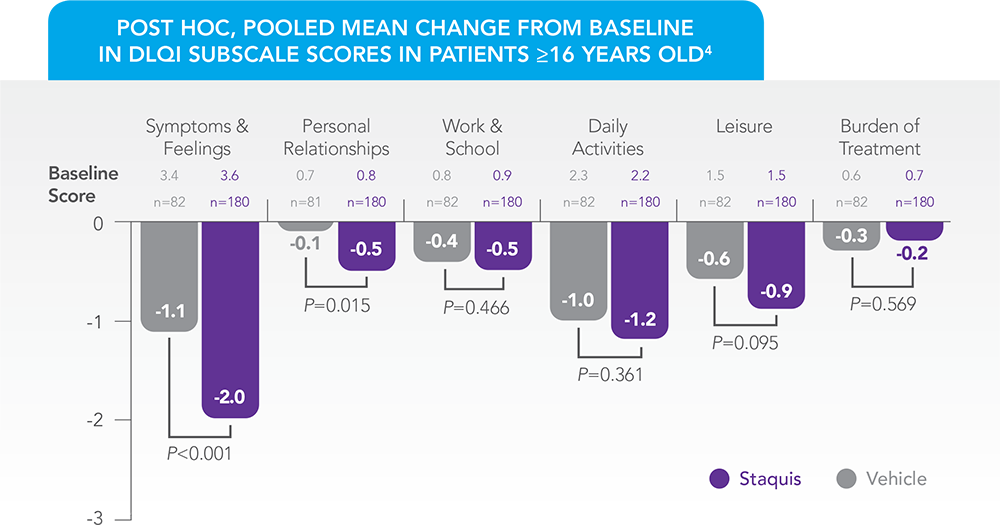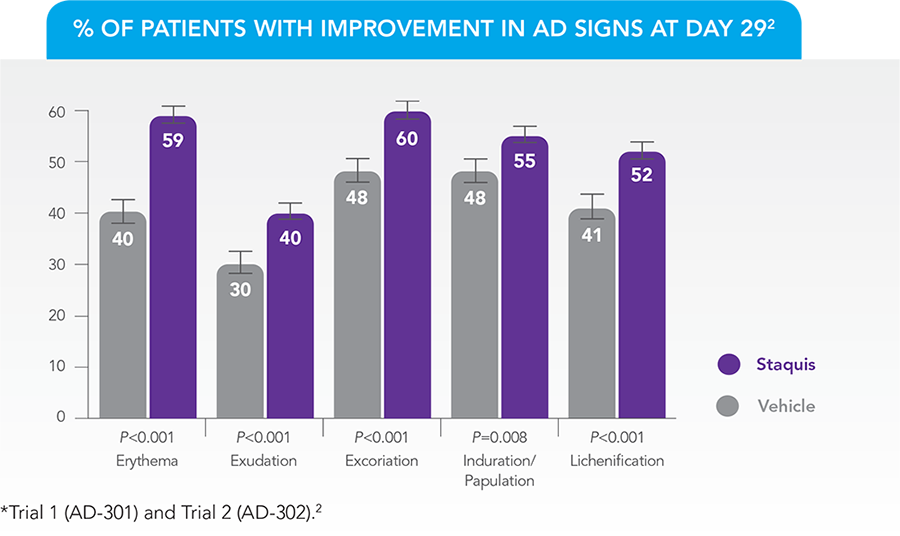ISGA scale efficacy results
Percentage of patients with ISGA score of Clear (0) or Almost Clear (1) by Day 293Approximately half of Staquis® patients were Clear (0) or Almost Clear (1) by Day 29.3
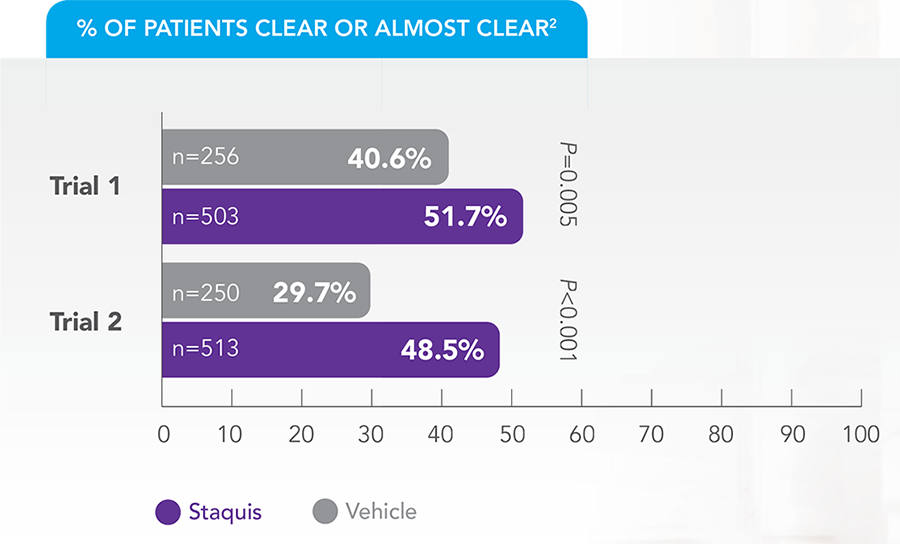
Secondary endpoint: time to success in ISGA score (pooled data)3 Staquis® helped some patients achieve Clear (0) or Almost Clear (1) skin faster than vehicle3
- On Day 8, success in ISGA score was achieved by more patients treated with Staquis® than with vehicle10
- Success in ISGA score was achieved by an almost 3x higher percentage of Staquis®-treated patients vs vehicle-treated patients by Day 810

Pruritus
A significantly greater proportion of patients treated with crisaborole demonstrated improvement at earliest assessment (day 2; p = 0.013) and early improvement of pruritus at day 6 (p < 0.001) than patients given vehicle
Proportion of patients achieving improvement in pruritus. Improvement on day 2 and early improvement in pruritus on day 6
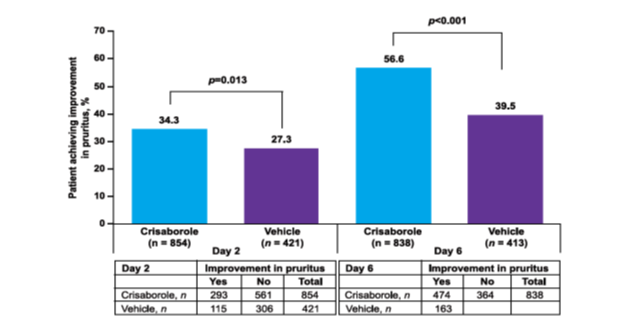
Other AD symptom efficacy results
Improvement in other physical signs of AD
Staquis® treatment improved other physical signs of AD3
Pooled analysis
- Significantly more Staquis®-treated patients achieved improvement in signs of AD (erythema, exudation, excoriation, induration/papulation and lichenification) vs vehicle-treated patients3
Improvement in QoL
Staquis® treatment delivered clinically meaningful improvement in QoL for some patients6
- Greater mean change from baseline experienced by Staquis®-treated children in CDLQI score compared with emollient-rich vehicle alone (-4.6 vs -3.0, respectively; P<0.001)6
- Greater mean change in DLQI score from baseline experienced by Staquis®-treated patients ≥16 years compared with emollient-rich vehicle alone (-5.2 vs -3.5, respectively; P=0.016)6
Both CDLQI and DLQI scores for Staquis® treated patients exceeded the minimal clinically important difference (MCID), with a significant improvement by Day 29.6
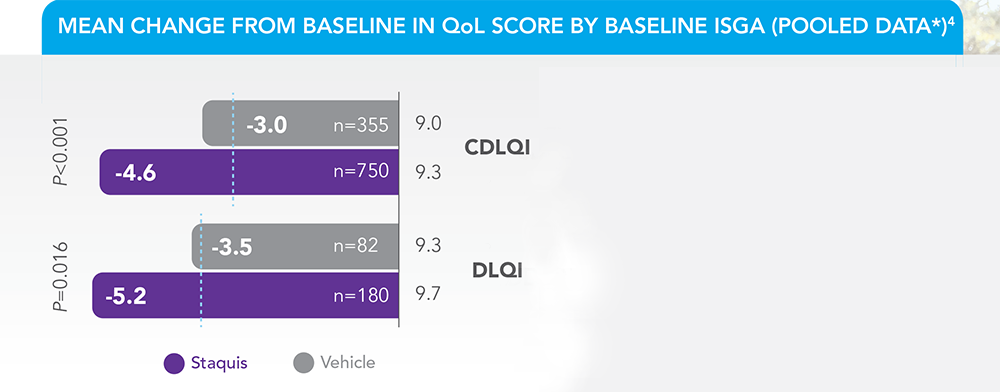
Post-hoc analysis of pooled data showed QoL improvements with Staquis®-treated vs vehicle-treated patients, in several domains of CDLQI and DLQI:6

